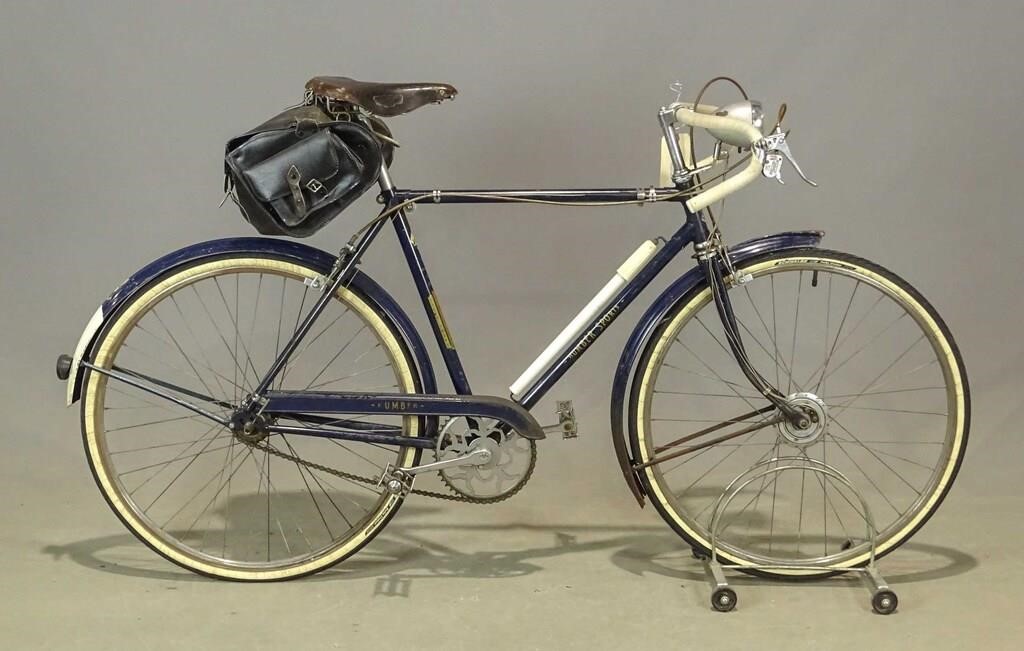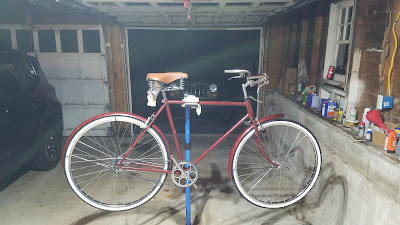It's surprising how quickly time moved this year. The riding season here ended a few weeks ago and now we are into the winter. For the time being there is no riding here, just indoor repairs and cleaning on some of the bikes. So I may as well leave a few year-end remarks.
Old Bike Market
I think 2022 was generally a "buyer's market" kind of year, assuming one had the spare money to actually buy anything. Inflation and a somewhat weak economy in the US and UK pushed some sellers to sell bikes for less real value that might have otherwise been had for the items. Parts from the UK were among the cheapest ever because, even as weak as the dollar was, the pound was even weaker. If you had the money (and certainly not everyone did), there were some good bargains if you looked for them.
This year also confirmed that despite all the talk in 2020 and 21 about COVID leading to a boom in outdoor activities like bicycling, hiking, etc., there was no lasting "boom" for vintage bikes. Whatever bump prices had in 2020 certainly was erased by inflation and a weaker market in 2022.
The outlook for 2023 is also iffy. Inflation is still relatively high and the economy is relatively weak. There are quite a few experts predicting a recession in 2023. Such a combination of factors might allow for those who do have the money to make some relatively good deals in 2023. But don't buy vintage bikes in 2023 expecting it to be your retirement fund...
Safety and Riding
I do not think that road safety has substantially improved since 2020. Perhaps it has degraded a bit, but certainly not improved. Much has been said about COVID causing increased car traffic, faster drivers, more aggressive driving, etc. The number of pedestrian and bicyclist injuries and deaths in my state have remained stubbornly high, despite us now being over two years since COVID. Ride carefully and use an LED safety light when in doubt.
Interactions between bicyclists and cars here also are not much better. This year, at one point, a lunatic driving a beat up sedan yelled at me about using the road, and how bicyclists were causing the roads to close. I don't know what he was talking about, but he slowed down and yelled at me about some political business about road closures due to bicycles. None of it made sense. I also observed a bicyclist who "took the lane" and was tailgated, given the horn, and berated by a car full of college-aged students. They were pissed off that he was in the lane and they turned into real jerks.
Unfortunately, I do not foresee an immediate improvement for 2023. Traffic will probably remain relatively heavy, drivers will still be driving large SUVs, vans, trucks, and the like, and infrastructure is improved only slowly. If bike trails are expanding in your area, it's always a good time to try them to get away from the cars and trucks.
My Plans
I will be back at it as usual in 2023. I have a couple bikes to sell so my garage will not be so cluttered, and who knows if I get sucked into buying bikes because I happen to see something I think I have to own. But for now, the plan is to slightly downsize once I figure out which bikes are not being ridden enough to justify keeping them.
I am hopeful that the riding season will begin in March, which usually means we have a somewhat longer season than usual. But there's always the chance we get late snow and don't start until later in April. We shall see...



















































